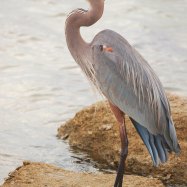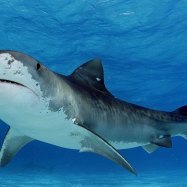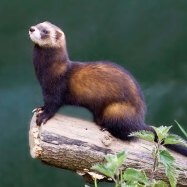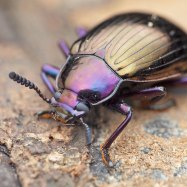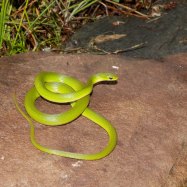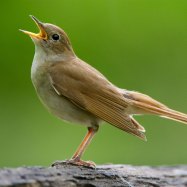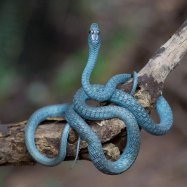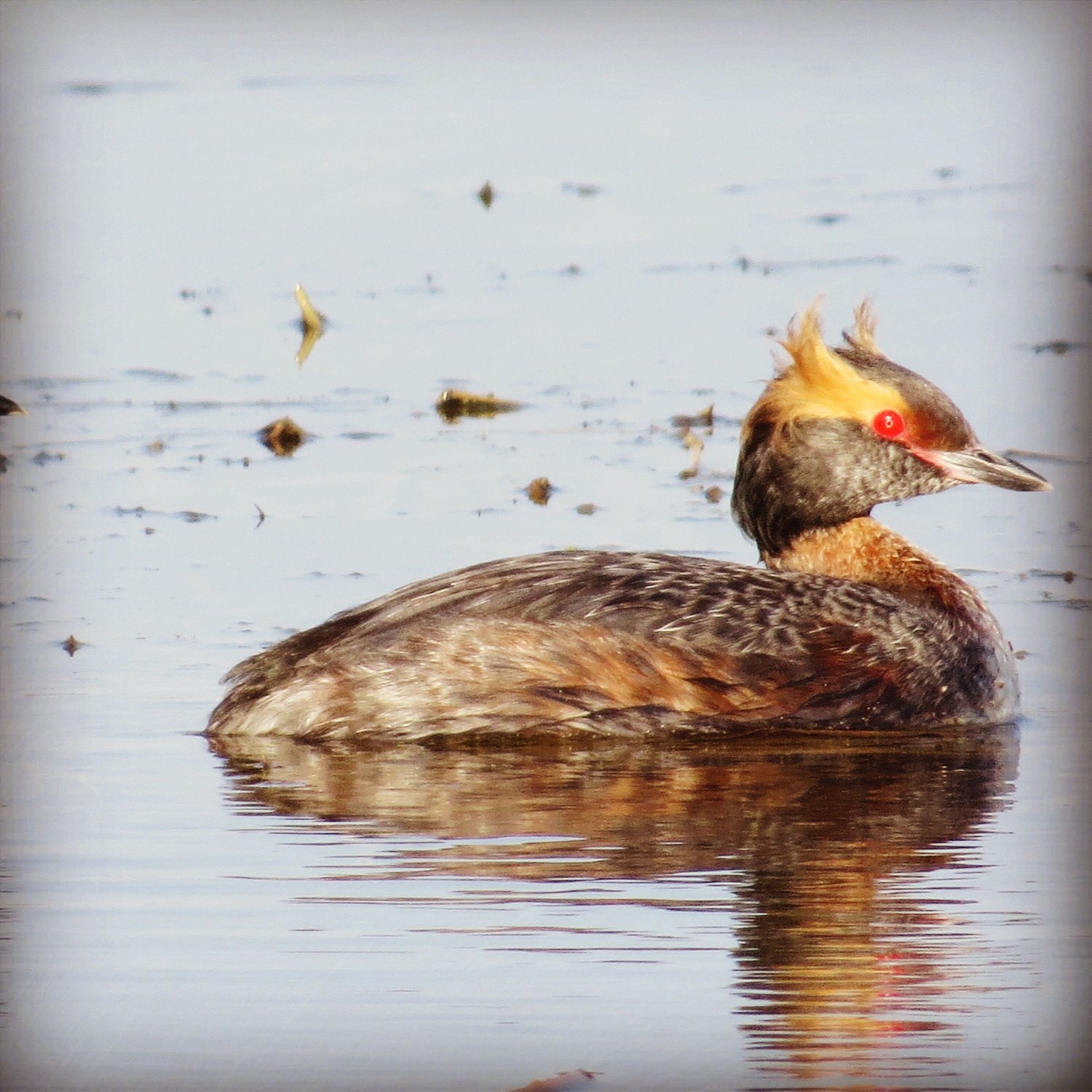
Horned Grebe
32 - 38 cm
The Horned Grebe, also known as the Slavonian Grebe, is a small waterbird found in Canada and the United States. With a compact and stocky body and measuring 32-38 cm in length, this bird is a skilled diver and can be spotted in many bodies of water. It's a member of the Podicipedidae family, and its distinct horn-like tufts on its head give it its name. Keep an eye out for this fascinating creature on your next trip to North America! #HornedGrebe #WildlifeWednesday #Canada #USA.
Animal Details Summary:
Common Name: Horned Grebe
Kingdom: Animalia
Habitat: Freshwater lakes, ponds, and marshes
The Fascinating World of the Horned Grebe: A Compact Avian Wonder
Amidst the vast expanse of the Northern Hemisphere, lies a breathtaking creature that is a testament to the exquisite beauty of nature – the Horned Grebe. Scientifically known as Podiceps auritus, this charming bird belongs to the class of Aves, with its family being Podicipedidae and its order being Podicipediformes.Found in the peaceful waters of North America, the Horned Grebe is a stunning sight to behold. With its striking black and white coloration, compact and stocky body, and of course, its distinct “horns”, this bird exudes a graceful yet powerful aura Horned Grebe. Its appearance and behavior have captivated the attention of bird enthusiasts around the world, making it a popular subject among avian researchers and photographers.
In this article, we will delve into the world of the Horned Grebe, exploring its habits, habitat, and all the remarkable features that make it stand out among its avian counterparts.
Habitat and Distribution
The Horned Grebe has quite a versatile habitat, it is typically found in freshwater lakes, ponds, and marshes. However, it is not uncommon to spot it in brackish water bodies or even occasionally in estuaries. This bird is commonly found in Canada and the United States, but it has also been spotted in Eurasia and other parts of the world.What's interesting is that during the breeding season, the Horned Grebe chooses to nest in shallower waters, while during the colder months, it migrates to deeper waters. This characteristic is a testament to this bird's ability to adapt and thrive in different environments.
Feeding Method
Being a highly skilled hunter, the Horned Grebe is a carnivorous bird that feeds on a variety of aquatic animals such as small fish, crustaceans, and even insects. Its compact body shape and powerful legs make it an exceptional diver, allowing it to go deep into the water to catch its prey Hellbender.Apart from diving and catching its prey, this bird has a unique feeding method that sets it apart from other birds. The Horned Grebe is known for its ability to swim underwater while using its wings as paddles, making it a remarkable sight to witness.
Appearance
The Horned Grebe is a sight to behold, with its distinctive black and white coloration. It has a black head, neck, and back, while its front and underside are white. What makes this bird stand out is its striking red eyes and its “horns”, also known as its golden or chestnut-colored tufts of feathers on its face.This tufted bird is also known for its compact and stocky body shape, with its length ranging from 32 to 38 cm. Its small wings, along with its streamlined body, make it an exceptionally agile and fast flyer, making it easier for it to evade predators or catch its prey.
Country of Origin
The Horned Grebe is a native of North America, with its origins mainly being in Canada and the United States. This bird has made itself home in the peaceful freshwater bodies of these countries. In addition to being found in these countries, it has also been spotted in parts of Eurasia.The Role of Horned Grebes in the Ecosystem
The Horned Grebe plays a vital role in the ecosystem, especially in its habitat. Being carnivorous, it helps regulate the population of aquatic animals, preventing any imbalance in the delicate ecosystem. It also plays a crucial role in the food chain, being a source of food for larger predatory species.Moreover, the nesting habits of the Horned Grebe provide a safe haven for aquatic animals, as its nests floating in shallow waters act as a refuge for smaller creatures from larger predators.
The Human Connection
The Horned Grebe may not be a commonly talked about species when it comes to conservation efforts, but it is worth noting that it has faced threats in the past. Like many other birds, the Horned Grebe also fell victim to hunting and habitat destruction, leading to a decline in its population.We, as humans, have a responsibility to protect and preserve these extraordinary creatures, not only for their beauty but also for their role in the ecosystem. The good news is that efforts have been made to protect its habitat and minimize human interference, resulting in a steady increase in the population of Horned Grebes.
The Impact of Climate Change
The Horned Grebe, like most avian species, has also been impacted by the changing climate. With the increase in global temperatures, the breeding habitats of this bird have been affected. This has led to a decline in the breeding success rate, resulting in a decrease in its population.Moreover, climate change has also caused changes in the migratory patterns of this species, leading to a disruption in its feeding habits. This has further affected its overall survival rate.
Protecting and Preserving the Horned Grebe
Conservation efforts for the Horned Grebe mainly revolve around preserving its habitat and minimizing human interference. This can be achieved through various methods, such as limiting pollution in its habitat, implementing sustainable fishing practices, and creating protected areas for this species to thrive.Additionally, we must also take steps to combat climate change and its effects on this bird's breeding and migratory patterns. This can be done through reducing our carbon footprint, reducing waste, and raising awareness about the importance of protecting our environment.
The Extravagant Mating Display of Horned Grebes
In addition to its impressive diving and feeding techniques, the Horned Grebe also has a vibrant and extravagant mating display. During the breeding season, the male Horned Grebe will put on a show for the female, displaying its bright and colorful breeding plumage and engaging in various courtship rituals.The most notable of these displays is the “rushing ceremony”, where the male and female take turns running towards each other on the water's surface, flapping their wings and calling out to each other. This display is not only a visual treat but also serves to strengthen the bond between the pair and serves as a way for the male to prove its worthiness as a mate.
In Conclusion
In a world where we are constantly surrounded by technology and man-made structures, it is easy to forget the beauty and magic of the natural world, and the Horned Grebe is a perfect example of this. With its distinct features and remarkable behavior, this bird has captured the hearts of many and continues to be a source of fascination for avian enthusiasts and researchers alike.As we continue to learn more about the Horned Grebe and its role in the ecosystem, it is essential that we work towards preserving and protecting this unique species and its habitat. Only then can we ensure that this marvel of nature continues to thrive and enchant generations to come. After all, nature's diversity is what makes this world an extraordinary place to live in.

Horned Grebe
Animal Details Horned Grebe - Scientific Name: Podiceps auritus
- Category: Animals H
- Scientific Name: Podiceps auritus
- Common Name: Horned Grebe
- Kingdom: Animalia
- Phylum: Chordata
- Class: Aves
- Order: Podicipediformes
- Family: Podicipedidae
- Habitat: Freshwater lakes, ponds, and marshes
- Feeding Method: Carnivorous
- Geographical Distribution: Northern Hemisphere
- Country of Origin: North America
- Location: Canada, United States
- Animal Coloration: Black and white
- Body Shape: Compact and stocky
- Length: 32 - 38 cm
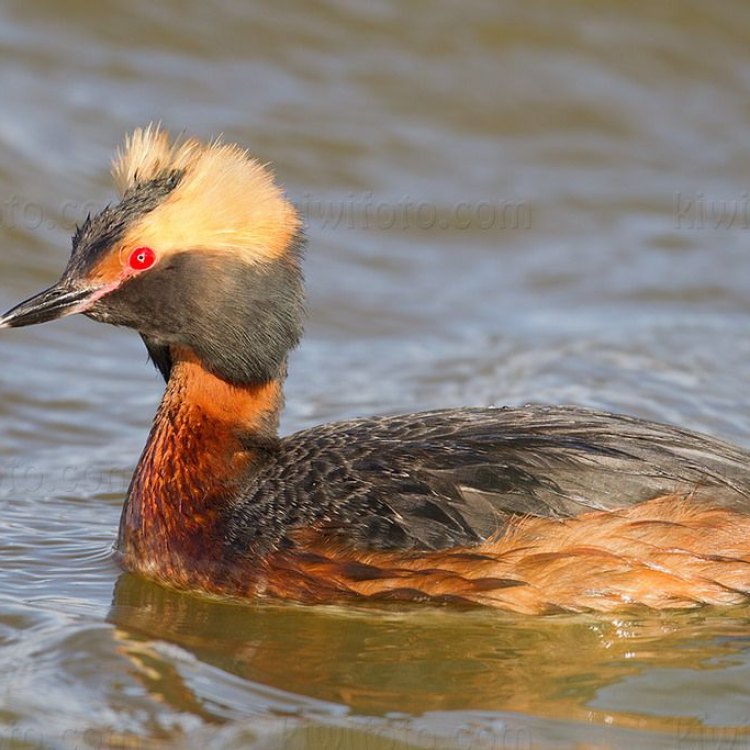
Horned Grebe
- Adult Size: Small to medium
- Average Lifespan: 6 - 10 years
- Reproduction: Monogamous
- Reproductive Behavior: Build floating nests on the water
- Sound or Call: Loud wailing and cackling sounds
- Migration Pattern: Migratory
- Social Groups: Solitary or in small groups
- Behavior: Dive and swim underwater for food
- Threats: Habitat loss, pollution, fishing nets
- Conservation Status: Least Concern
- Impact on Ecosystem: Helps control population of fish and invertebrates
- Human Use: Hunted for sport
- Distinctive Features: Bright red eyes, spiky golden head feathers
- Interesting Facts: Can take off directly from water without needing a runway
- Predator: Birds of prey, fish
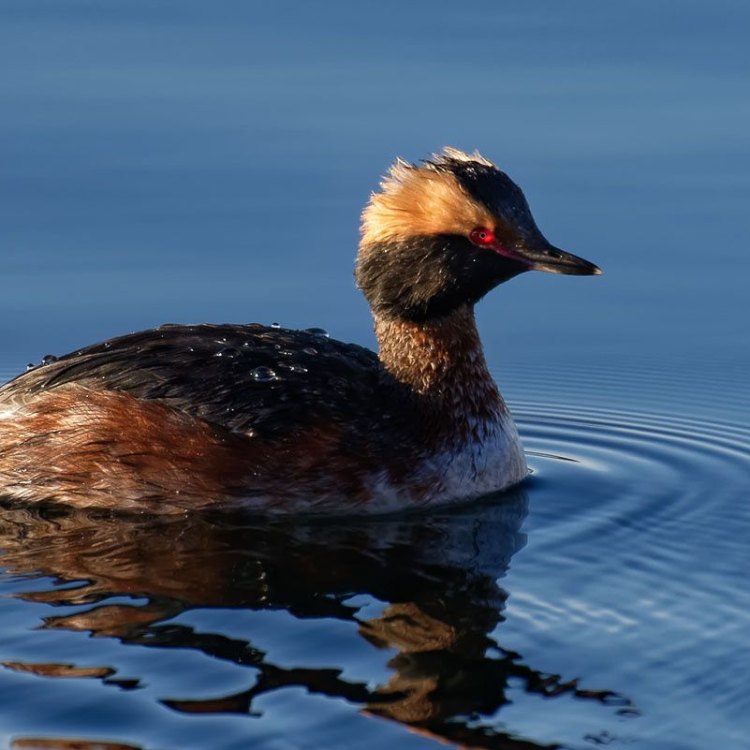
Podiceps auritus
The Fascinating World of the Horned Grebe: A Small but Mighty Waterbird
The natural world never ceases to amaze us with its vast diversity and endless wonders. From the towering giraffes to the tiny hummingbirds, each species has its unique characteristics and plays a crucial role in maintaining the balance of the ecosystem. Among these fascinating creatures is the Horned Grebe, a small to medium-sized waterbird with remarkable features that make it stand out from the rest.The Horned Grebe, also known as the Slavonian Grebe or the Dabchick, is a species of the grebe family, characterized by their long necks, small heads, and short tails PeaceOfAnimals.Com. They are native to North America, Eurasia, and Iceland and can be found in freshwater lakes, marshes, and estuaries. Despite their wide distribution, the Horned Grebe is not a well-known species, and many people have never heard of them.
But don't be fooled by their lack of recognition; these birds have some impressive features that make them worthy of our attention. Let's dive into the fascinating world of the Horned Grebe and discover what makes them a unique and essential part of our ecosystem.
Size and Lifespan
One of the first things that come to mind when we think of birds is their soaring flights and long wingspans. But the Horned Grebe is a little different. With an adult size of only 13-16 inches and weighing between 17-19 ounces, they are relatively small birds. However, what they lack in size, they make up for in their incredible diving and swimming abilities.In terms of lifespan, the average lifespan of a Horned Grebe is 6-10 years Haikouichthys. However, some individuals have been known to live up to 20 years, making them one of the longest-living grebe species.
Reproduction and Behavior
The Horned Grebe is a monogamous bird, meaning they mate for life. During the breeding season, which typically begins in late April and lasts until June, the males perform elaborate courtship displays to attract a mate. These displays include vocalizations, head-tossing, and water splashing.Once a pair has formed, they will begin the process of building a floating nest on the water, using aquatic vegetation and mud. The location of their nest makes it unique among birds, as it is entirely on the water. The nest provides a safe haven for their eggs and chicks, protecting them from predators on the land.
The most distinctive feature of the Horned Grebe is their loud wailing and cackling sounds, which they use to communicate with their mates and defend their territory. These vocalizations can often be heard echoing across the water, making it easy to locate and observe these elusive birds.
Migration and Social Groups
The Horned Grebe is a migratory bird, and their migration pattern is determined by the availability of food. During the breeding season, they can be found in the northern parts of North America and Eurasia. But as winter approaches, they begin their journey to the southern parts of North America, Central America, and the Caribbean. Some populations also migrate to the western coast of Europe and Africa.These birds are typically solitary, and you will often find them alone or in small groups on the water. However, during migration, they may gather in large groups of up to thousands of individuals. These gatherings are called "rafts" and serve as a form of protection against predators during their long journey.
Diet and Threats
The Horned Grebe is a master of underwater foraging. They primarily feed on small fish, crustaceans, and insects, which they catch by diving and swimming underwater. Their remarkable diving abilities are due to their dense and waterproof feathers, which helps them stay warm and buoyant in the water.Like many other animal species, the Horned Grebe faces threats to its survival, with the major one being habitat loss. The destruction of their breeding and wintering grounds due to urban and industrial development has significantly reduced their numbers. Additionally, pollution in their habitats, mainly caused by oil spills and agricultural run-offs, have a severe impact on their health and survival. Another significant threat is the entanglement in fishing nets, leading to the accidental death of these birds.
Conservation Status and Impact on Ecosystem
Not all animals are lucky enough to have a conservation status of "least concern," but the Horned Grebe is one of them. Despite their threats, their population remains relatively stable, and they are not classified as endangered or vulnerable. This is due to their widespread distribution and adaptable nature, allowing them to persist in various habitats.But just because they are not in immediate danger of extinction doesn't mean we should take their presence for granted. The Horned Grebe, like any other animal species, plays a crucial role in the ecosystem. As underwater foragers, they help control the population of fish and invertebrates, maintaining a healthy balance in their habitats.
Distinctive Features and Interesting Facts
The Horned Grebe may seem like an inconspicuous bird at first glance, but they have some remarkable features that make them stand out. Their bright red eyes, paired with their striking black and white plumage, gives them a unique and unmistakable appearance. However, what truly sets them apart are the spiky golden head feathers that they display only during the breeding season. This striking feature is the origin of their name, as it resembles small horns on their head.But perhaps the most interesting fact about the Horned Grebe is their take-off technique. Unlike most birds that require a runway to take off, the Horned Grebe can take off directly from the water's surface, flapping their wings rapidly and creating a hopping motion that propels them into the air.
Predators and Human Use
As is the case with many other animal species, the Horned Grebe also has its predators. These include other waterbirds such as Bald Eagles and Ospreys, who prey on their eggs and chicks. Fish, in particular, the Northern Pike, also pose a threat to these little birds.In terms of human use, the Horned Grebe is primarily hunted for sport, but their small size means they are not a significant game bird. However, they still face accidental killings during hunting seasons, contributing to their decline in some areas. They are also popular among birdwatchers, who venture out in search of these elusive birds.
In Conclusion
The world of the Horned Grebe is a fascinating one, filled with unique characteristics and behaviors that make them stand out from the rest. From their striking appearance and vocalizations to their incredible diving abilities and migratory patterns, these birds are a wonder to behold. They may be small, but they play a significant role in maintaining the balance of their ecosystems, making them an essential part of our natural world.As humans, it is our responsibility to protect and preserve these remarkable creatures and their habitats, ensuring that future generations can also marvel at their beauty and unique features. So next time you come across a Horned Grebe on your travels, take a moment to appreciate and admire these often-overlooked birds.
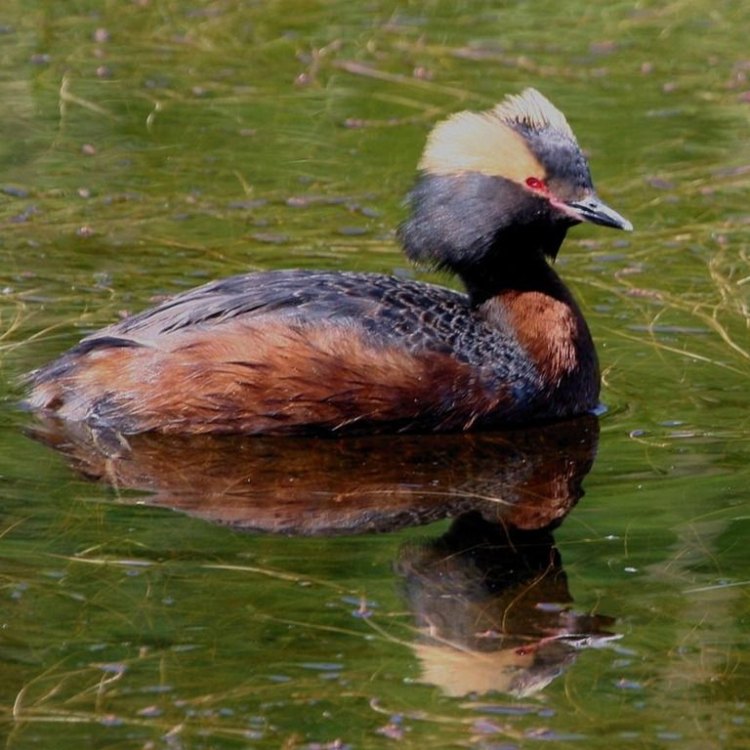
The Fascinating World of the Horned Grebe: A Compact Avian Wonder
Disclaimer: The content provided is for informational purposes only. We cannot guarantee the accuracy of the information on this page 100%. All information provided here may change without prior notice.

